- Home
- Media Kit
- Current Issue
- Past Issues
- Ad Specs-Submission
- Ad Print Settings
- Reprints (PDF)
- Photo Specifications (PDF)
- Contact Us

![]()
ONLINE

Discovery Science
Editors’ Note
LEADERS recently visited the U.S. Department of Energy’s (DOE) Brookhaven National Laboratory on Long Island to tour this center for discovery science and innovation. Joining us for a special roundtable discussion about Brookhaven Lab’s cutting-edge research, capabilities, and technological advances were:
•, Brookhaven National Laboratory Director
•, Associate Lab Director for Energy & Photon Sciences
•, Chief Scientist for Energy & Photon Sciences
•, Center for Functional Nanomaterials Director
•, Medical Isotope Research & Production Program Director
•, Biology Department Chair
•, Computational Sciences Initiative Director
Company Brief
DOE’s Brookhaven National Laboratory (bnl.gov) is a valuable national resource for the discovery and technological advances that fuel growth and can shape the world for future generations. At the frontiers of scientific exploration and 60 miles east of Manhattan, Brookhaven Lab is home to seven Nobel Prize-winning discoveries and a multibillion-dollar investment in world-leading technologies – where experts from DOE’s national laboratories, academia, and industry unite, exploring the unknown to answer big questions and solve big challenges. In 2017, Brookhaven Lab is celebrating a landmark anniversary with 70 years of discovery and innovation.
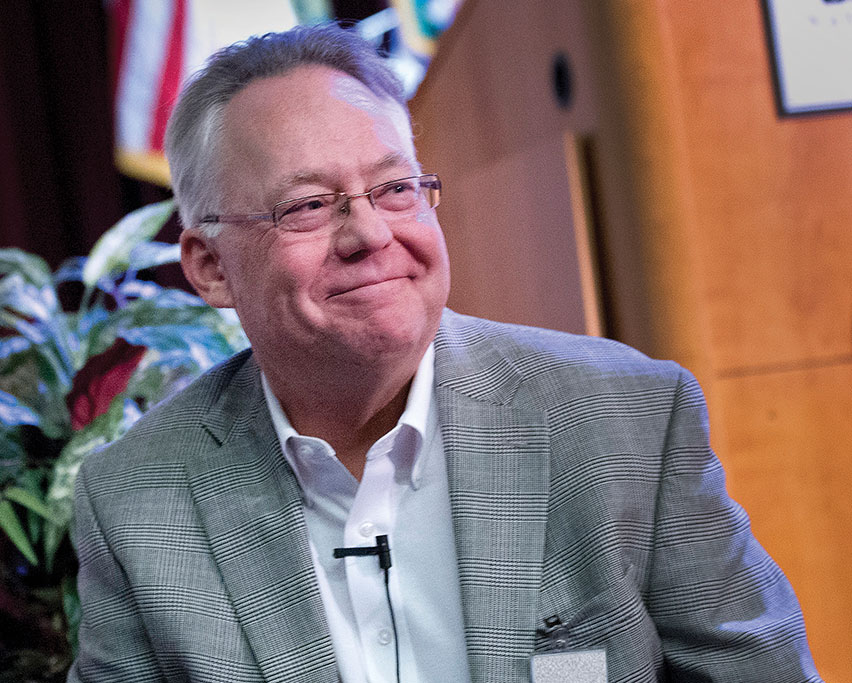
Doon Gibbs
How do you describe the quest of Discovery Science?
Gibbs: Discovery Science is about driving solutions to some of the biggest questions of our time, from understanding how the universe’s smallest particles interact to inventing new technologies that can power and secure our nation’s future. It’s an exciting cycle that starts with asking big questions, aligning resources, figuring out the answers, tackling the inevitable new questions that arise, and exploiting the expected and unexpected breakthroughs you achieve.
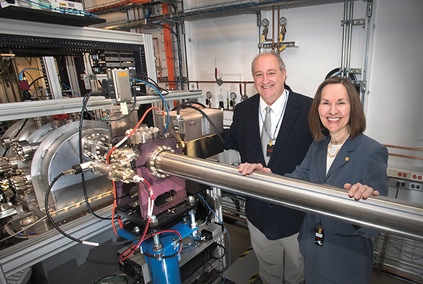
Jim Misewich and Esther Takeuchi
Brookhaven is the land of big machines for discoveries that power innovation. It’s one of 17 U.S. Department of Energy (DOE) national labs and is managed for DOE’s Office of Science by Brookhaven Science Associates, a company founded by Stony Brook University, which is among the largest academic users of Laboratory facilities, and Battelle, a nonprofit applied science and technology organization.
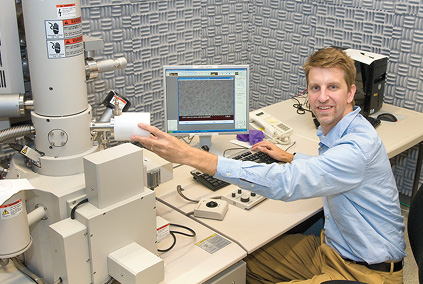
Charles “Chuck” Black
With resources and commitment primarily from DOE’s Office of Science, these machines are “user facilities,” tools that researchers in academia and industry need, but are too large and too complex for these institutions to build and operate alone. Not all science needs to be big science, but the big user facilities at Brookhaven help make it special to attract intellectual capital – some of the top scientists, researchers, engineers, and others from around the world. The national labs are uniquely positioned to assemble and host teams to do “basic,” fundamental research. The outcomes advance technology and U.S. leadership in science. Collectively, the DOE labs are a national treasure – a science-based enterprise and vital asset for the scientific discovery and technological innovation on which economic growth depends, with impacts in energy, national and nuclear security, and environmental management.

Cathy Cutler
How are scientists using the largest machine at Brookhaven to explore the origins of all visible matter?
Gibbs: The Relativistic Heavy Ion Collider (RHIC) is the biggest machine on site and it’s two and a half miles around. RHIC is the only particle collider operating in the United States and is the most versatile in the world. We smash atoms together there at nearly the speed of light to unlock mysteries of the matter that makes up the mass of nearly everything we see in the universe today. In the process, we recreate the conditions of the early universe and probe subatomic particles called quarks and gluons. Understanding how those building-block particles interact provides new insights about why the universe works the way it does, from people to plants, planets, and stars.
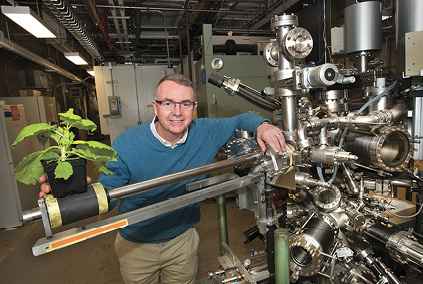
John Shanklin
The RHIC accelerator complex also provides key infrastructure and capabilities for scientists at other facilities on site. At the NASA Space Radiation Laboratory, we use its particle beams to simulate cosmic radiation in preparation for sending astronauts for longer trips in space and to Mars. The RHIC complex also enables us to produce medical isotopes that save lives through cardiac diagnostics and research on killing cancer without the side effects of current treatments.
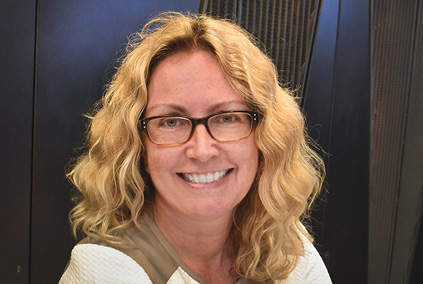
Kerstin Kleese van Dam
Thinking years ahead, RHIC provides the infrastructure that could be the foundation for an electron-ion collider, a next-generation user facility for decades of exploration into the fundamental particles at the heart of all matter in the visible universe. Such an investment would propel decades of future discovery and help the U.S. maintain its leadership in the field of nuclear physics, accelerator technologies, and more.
How has the bright light at NSLS-II enabled groundbreaking research into energy and health solutions?
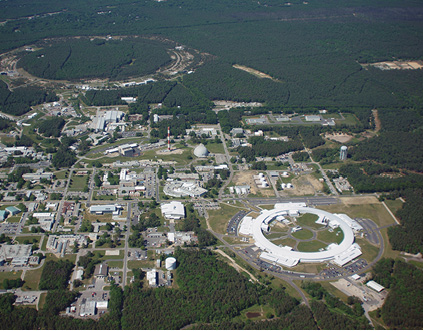
The U.S. Department of Energy’s
Brookhaven National Laboratory
on Long Island.
Misewich: “NSLS-II” is the acronym for the National Synchrotron Light Source II, which is the brightest light source of its kind on the planet. The building is large enough to fit Yankee Stadium inside. Brookhaven scientists and guest researchers use NSLS-II’s ultra-bright X-rays and advanced detectors like a microscope to explore materials in ways never before possible – materials like superconductors and catalysts, geological samples, and biological proteins to accelerate advances in energy, environmental science, and medicine. NSLS-II is the result of approximately $1 billion of investment and more than 10 years of design, construction, and commissioning. Brookhaven is a leader in big science, and we excel at managing big projects, too. The Project Management Institute named NSLS-II as its 2016 Project of the Year for completing on time, under budget, with $68 million of additional scope.
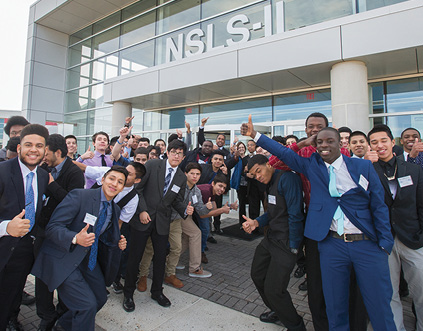
Students at the National
Synchrotron Light Source II, the
brightest light source of its kind
for exploring materials in ways
never before possible.
With the brightness and brainpower at NSLS-II and the Center for Functional Nanomaterials (CFN), which is a complementary facility a short walking distance from NSLS-II, we are developing the ability to study processes “in operando,” in real-world operating environments with authentic pressures, temperatures, and electric fields, instead of isolating them in pristine vacuum chambers and ultraclean lab environments. We can identify strengths and weaknesses of battery materials by watching internal processes as they happen, rather than doing an “autopsy” afterward. NSLS-II also provides researchers with tremendous advantages in developing advanced capabilities for energy storage, which is the “holy grail” of a cheaper, smarter, greener, distributed digital power in the future.
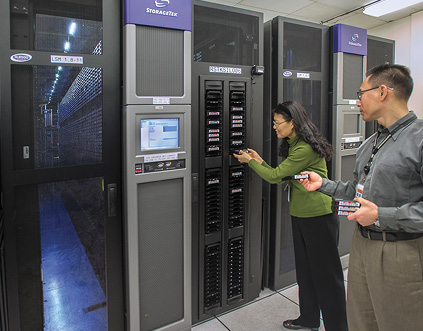
Brookhaven Lab is home to the second
largest scientific data archive in the entire
United States and the fourth largest
in the world.
What is cryo-EM, and how will it advance breakthroughs in human health?
Misewich: Cryogenic electron microscopy – we call it “cryo-EM” – is an excellent recent example of how we’re leveraging our big machines and relationships with Cold Spring Harbor Laboratory and Stony Brook University to partner for breakthroughs in biology and the life sciences. The healthcare and the pharmaceutical industries could benefit tremendously from this capability being developed at Brookhaven.
Biomolecules play a huge role in our lives. One forefront challenge in the fight against disease is in understanding biomolecular structures such as proteins and viruses with atomic scale resolution. With funding from New York State, we are bringing a new tool to Brookhaven that images biomolecules suspended in thin layers of ice using cryo-EM.
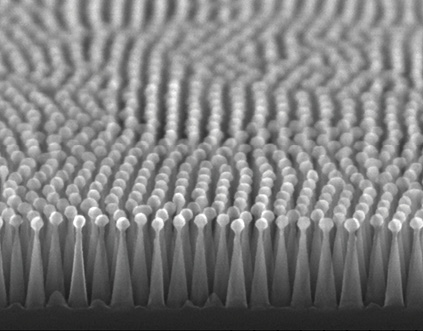
Scientists at the Center for Functional
Nanomaterials created this nanotextured
surface that eliminates reflection to
dramatically increase the amount of
energy a solar panel captures.
We’re locating the cryo-EM instrumentation at NSLS-II, where we now have a suite of advanced imaging capabilities for biological structures, thanks to funding from the National Institutes of Health. This integrated suite of imaging tools incorporating X-ray techniques at the NSLS-II beamlines and complementary cryo-EM tools will allow us to solve the structures of biomolecules at a greatly accelerated pace, which has the potential to accelerate the design of new drugs. This research – and doing it quickly and cheaply – could be a game-changer for industry.
What other game changers originated at Brookhaven during its 70-year history?
Gibbs: We couldn’t possibly name them all, but I can highlight some that are simply remarkable. There are the early discoveries that found violations of possible CP and parity symmetries in high energy physics. At RHIC, we’ve discovered the “perfect liquid,” called quark-gluon plasma that filled the early universe microseconds after the Big Bang. We invented L-dopa, the gold standard for treating Parkinson’s; magnetically levitated (MagLev) transportation; multi-grade motor oils; Tennis for Two in 1958, which is considered one of the world’s first video games; and, truly, countless others.
Brookhaven is home to seven Nobel Prize winning discoveries, more than 30 R&D 100 awards, five National Medal of Science winners, and one National Medal of Technology and Innovation – that’s Esther Takeuchi, who holds a joint appointment at Brookhaven Lab and Stony Brook University. Esther is named inventor on more than 150 patents and holds several patents for the battery in the implantable defibrillator.
How are ‘in operando’ capabilities at NSLS-II powering R&D for next-generation batteries and energy storage?
Takeuchi: At NSLS-II, we have tools to now see what no one’s ever seen before. Operando research allows us to look at the chemicals inside a battery as it works and recharges, so we can now see the mechanisms that make the battery do its job and even those mechanisms that shorten battery life.
Batteries provide power from the chemical reactions happening inside. As you charge and discharge a battery again and again, inside, the cathode may gradually dissolve and, over time, the chemical reactions inside provide less “oomph.” We’re experimenting with different material combinations and new materials. With the information from our measurements, we can make the batteries more efficient, where they generate more power and less heat.
One compound of interest to us is iron oxide – that’s the scientific name for rust. Iron oxide is cheap, nontoxic, and much more common than rare earth elements, and the best part is that it can provide three times the energy content of one of the common materials used today.
If we’re successful, this research could have tremendous implications beyond smartphones, laptops, and defibrillators. It could be a major contributor for electrifying the transportation fleet and finding the holy grail that Jim Misewich mentioned earlier – energy storage – for collecting energy from sources like the sun and wind, storing it, and then using it after the sun sets and when the wind dies down. R&D at the Center for Functional Nanomaterials at Brookhaven could also lead to major changes in how we collect energy from the sun and detect threats to our national security, too.
How is your nanoscience research creating results so big from materials that are so small?
Black: You know, the promise of nanoscience is that when materials are structured at the scale of nanometers, their properties can change. That means it’s possible to make the same materials do new and exciting things. A nanometer is fantastically small – a billionth of a meter. Did you know that our fingernails grow at about a nanometer each second? So a nanometer is one second of fingernail growth – not a lot. In the CFN we are able to create materials that are structured on this scale, bringing new discoveries to fundamentally improve what’s possible for technology and health.
What advances in nanoscience can improve energy production?
Black: When you look at photos showing solar panels on a bright sunny day, you’ll notice that the panels reflect the blue sky and clouds. That reflection is inefficiency. It is light going back up toward the sky instead of being used by the solar panel to produce power. With inspiration from moth eyes, which are naturally highly antireflective, scientists in the CFN created nanotextured surfaces that eliminate reflectivity and dramatically increase the amount of energy a solar panel captures.
Similar nanotextures are useful in helping solar panels operate under less-than-ideal conditions. Imagine a surface covered with nanometer-scale traffic cones – a few seconds of fingernail growth long – packed neatly edge to edge. My collaborators and I recently showed that these nanotextures prevent fog from accumulating on this surface. Water droplets literally jump off it. Imagine how that would improve how solar panels absorb light on dewy mornings. Coating ski goggles with these structures could even reduce injuries in the mountains by eliminating fogging.
How can nanotextures strengthen national security?
Black: For both national security and medical applications, we can use nanoscience to create ultrasensitive detector sensors that ignore “noise” while identifying specific molecules from trace amounts of explosive materials, for example. Similar detectors could be optimized to look for indications of the early stages of cancer.
The CFN at Brookhaven is outfitted with state-of-the-art facilities to make, measure, and understand nanomaterials for many different uses. We are advancing the field of nanoscience to improve our world. We work with collaborators from other national laboratories, universities, and industry, and we can work with partners to adapt processes for commercial settings.
What radioisotopes does Brookhaven produce for health diagnostics today and cures tomorrow?
Cutler: At Brookhaven, we can make radioisotopes that would otherwise not be available, thanks to our high-energy linear particle accelerator that is part of the accelerator infrastructure for RHIC. Now we’re targeting efforts to produce radioisotopes to image, treat, and win against cancer. These radioisotopes allow for personalized treatments, enabling us to treat patients with the right drug at the right time.
The Brookhaven Linac Isotope Producer is part of DOE’s nationwide radioisotope production program. Demand for these radioisotopes continuously exceeds supply, so the RHIC accelerator complex and our program are vital. We produce half the nation’s strontium-82 for generators for cardiovascular diagnostics and we are working toward upgrades to double our production capacity. We’re also collaborating on research with radioisotopes for cancer therapy. Actinium-225, a radioisotope we can produce on site, is an “alpha-emitter” for noninvasive treatment that kills cancer cells with a localized punch and minimal damage to surrounding tissue. We all know someone who’s lived with the brutality of cancer. This research is for a fight we must win and the sooner, the better.
How has Brookhaven developed a new, simpler biodiesel fuel that is on its way from labs at Brookhaven to the marketplace?
Shanklin: Creative applications of our basic science discoveries are allowing us to develop new sources of renewable and sustainable fuels. For instance, we’re now in discussions with global energy providers on a revolutionary approach to produce biodiesel from sugar cane. By rewiring the metabolism of sugar cane, we are creating a new crop, “oil cane,” in which its sugar can be converted internally into oil that can be squeezed out and then converted to biodiesel with a single-step chemical conversion. This would simplify the current production of transportation fuel from sugar cane, which involves fermentation, in which sugar cane’s sugar is converted to ethanol, which is lower in energy than biodiesel.
If commercial quantities of oil can be accumulated in sugar cane stems, little additional capital will be needed for retrofitting existing infrastructure. This work is the “fruit” of a partnership with the Universities of Illinois and Florida, and DOE’s Advanced Research Projects Agency-Energy (ARPA-E) funding for advancing high-potential, high-impact energy technologies.
With sugar cane, the technology is rapidly moving from the research phase into development and we are highly optimistic we can have similar success making high levels of oil in aquatic duckweed plants, by collaborating with Rob Martienssen’s group at Cold Spring Harbor Laboratory.
Can Brookhaven’s big data solutions for science be applied to other areas?
Kleese van Dam: Brookhaven is home to the second largest scientific data archive in the entire United States and the fourth largest in the world. High-throughput computing has a major role in discovery and Brookhaven has been at the leading edge for decades. Our computing capabilities are unique because we can acquire, process, analyze, and distribute extremely large volumes of data from events as they happen and evolve – rather than, say, sifting for a specific point or instance – to identify patterns and processes. Regardless of the field, getting results quickly in a dynamic environment leads to competitive advantage, whether in science, finance, pharmaceutical research, energy applications, or elsewhere.
How big is the ‘big data’ at Brookhaven?
Kleese van Dam: We provide access to leading experts and state-of-the-art hardware for clients at Brookhaven and around the world, so we process a lot of data. In 2016, we processed 400 petabytes. Right now, our data archive contains 100 petabytes of data that is cataloged, searchable, and ready for analysis. For context, those 100 petabytes are equivalent to the amount of data to stream high-definition video 24 hours a day, seven days a week for 340 years.
Is your software getting smarter? What will high-throughput computing provide in the future?
Kleese van Dam: One new direction we are focusing on is “autonomous optimal experimental design,” which is machine learning – artificial intelligence – for research. We can analyze the data in near real-time to steer the discovery as it happens, both in complex and high-throughput experiments as they are happening and for future R&D. This, for example, could point scientists toward new materials to explore and pharmaceuticals to target different efforts for treatments. We create extremely sophisticated algorithms to process data coming in – that’s how we identify opportunity.
Gibbs: That’s how we power discovery.•